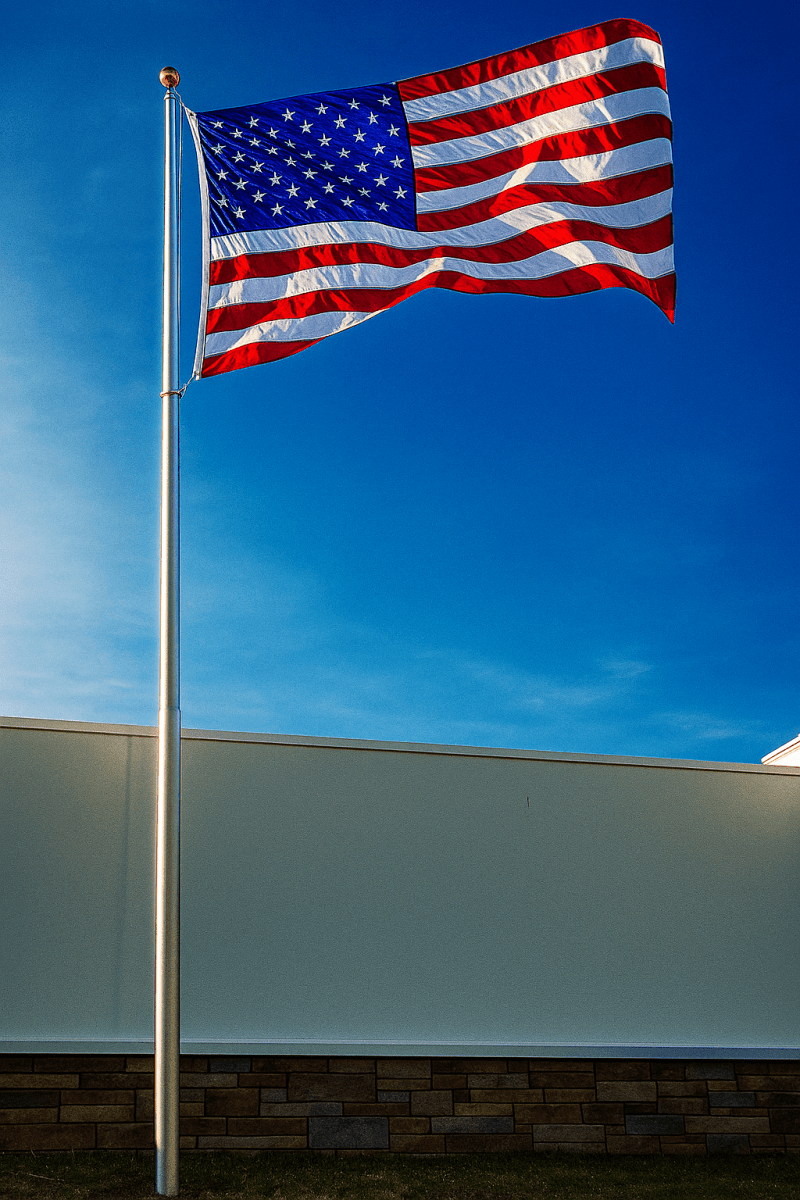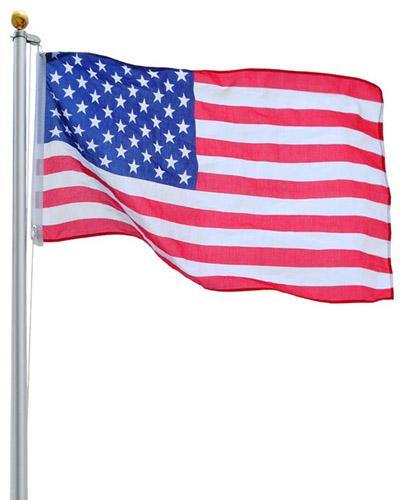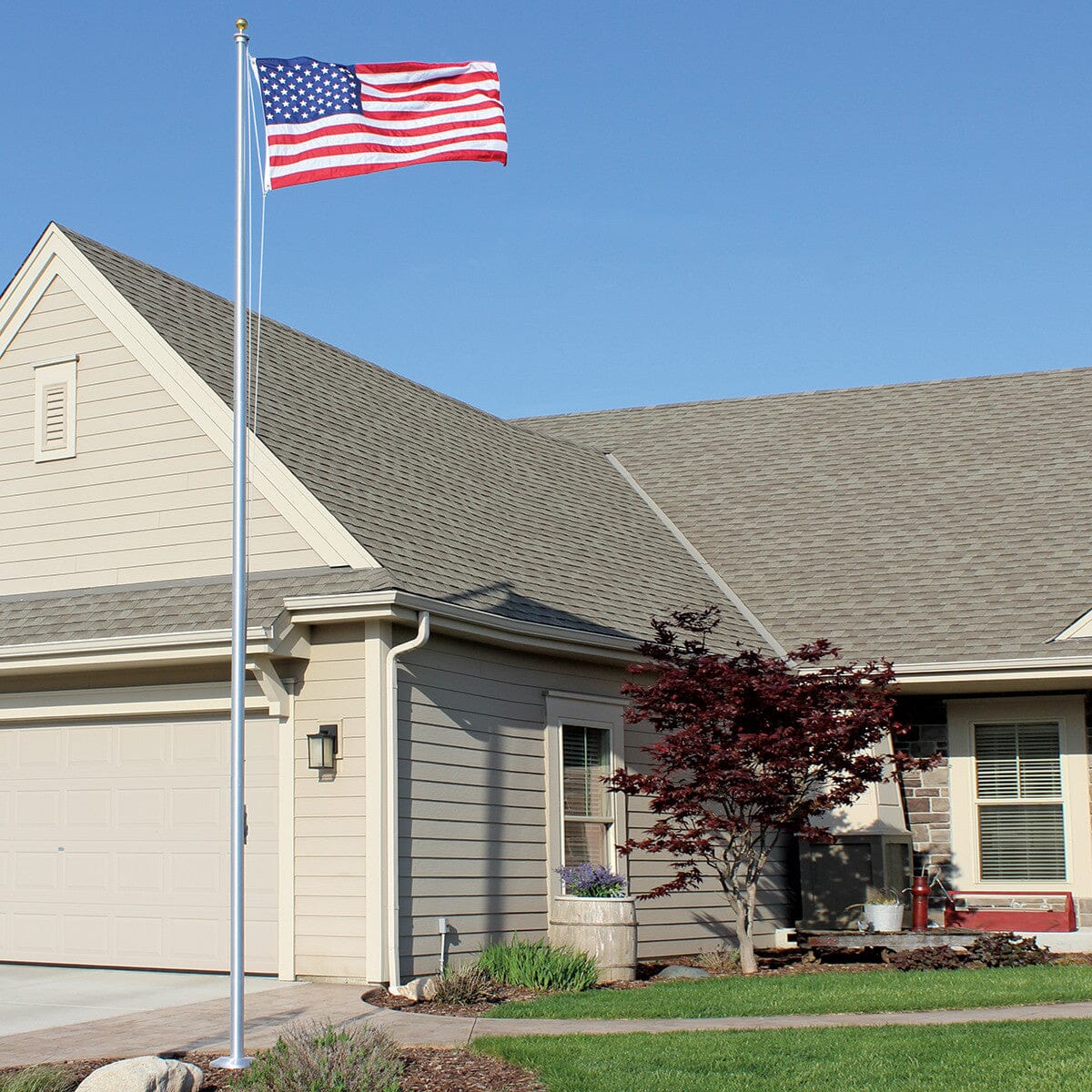Flying a flag is a meaningful way to show pride, celebrate milestones, or mark special occasions. There’s nothing like the sight of a flag rising high. But strong winds can quickly turn your display into a concern. That’s why knowing how to choose the best flagpole for windy conditions makes all the difference if you want your flag to fly safely for years.
A dependable flagpole does more than look great. It brings peace of mind, standing strong throughout every season. Choosing the right one is an investment in appearance and durability, so your flag always looks its best no matter what the weather dishes out.
What Makes Wind Ratings Important?
Before you choose a flagpole, get familiar with wind ratings. Manufacturers put flagpoles through strict tests to find out the highest wind speeds they can handle. You’ll usually see these ratings in miles per hour, and they’re listed both with a flag attached and without.
A flag in the wind grabs onto pressure like a sail. That extra force goes straight to your pole. Always check the flagged wind rating, which gives you a real-world look at how your flagpole will perform in your yard. The higher this number, the stronger and more reliable the pole.
Are Aluminum or Fiberglass Flagpoles Better for Windy Conditions?
The flagpole’s material sets the stage for how well it’ll handle tough weather. Most people find themselves choosing between aluminum and fiberglass.
Aluminum flagpoles are known for being light yet incredibly sturdy. They’re easy to install and hold up well against bending and corrosion. Look for ones made from high-grade, aircraft-style aluminum for top performance in all seasons.
Fiberglass flagpoles are flexible by nature, bending rather than breaking when the wind picks up. That flexibility helps them bounce back into shape, and the material resists rust and electrical conductivity. Deciding between aluminum and fiberglass really comes down to local weather and personal preference.
Does Wall Thickness Matter in a Windy Area?
When it comes to keeping your pole firmly in place, wall thickness matters a lot. Thicker walls give the pole backbone, especially during those gusty moments.
If windstorms occur regularly where you live, don’t cut corners on wall thickness. Standard-duty might work in a calm area, but windy spots need extra muscle. A heavier gauge means your flag display stays straight and safe, even when conditions get wild.
Looking for the perfect blend of strength and long-term use? Many people discover that a commercial-grade flagpole delivers on both counts, even if you’re flying the flag at home. Built to handle the daily wear of public settings, these poles feature thicker walls and rock-solid construction. When you invest in this kind of quality, your flagpole will stand tall through any season.
Why Is a Tapered Design a Good Choice?
The secret strength of many high-end flagpoles is their tapered design. They start out wider at the bottom and trim down as they go up. This isn’t just about style.
The wider base handles the brunt of the wind, while the slimmer top slashes resistance. This disperses the stress out evenly, reducing weak spots and making it less likely for the pole to fail at any single point. If you’re serious about stability, tapered poles are a proven option for windy spots.

How Tall Should Your Flagpole Be?
Flagpole height directly impacts how it will weather a storm. The taller you go, the higher the wind speeds you’ll encounter. Even a 20-foot pole faces much less wind than a towering 40-footer.
Consider what works best for both your property and your local climate. While a taller pole is dramatic and eye-catching, a shorter model often means greater reliability in strong winds. Always balance style with smart choices based on your local conditions.
Internal Versus External Halyard: Which Works Best in Wind?
The halyard—the rope for raising and lowering your flag—comes in two types: internal or external. This choice affects security, wind resistance, and even noise.
- External halyard systems have their rope running outside the pole. They’re traditional and easy to use, but can make a lot of noise and may wear out faster when the wind picks up.
- Internal halyard systems hide the rope inside the pole for a streamlined look. They keep the halyard protected from the elements and help cut down on the clanging that can happen in strong breezes. In windy areas, an internal halyard is often a quieter, longer-lasting choice.
How Critical Is the Foundation and Installation?
A flagpole is only as good as its foundation. If the base isn’t rock solid, the other details won’t matter much. Wind-ready flagpoles require a deep, sturdy anchor, most often a concrete footing.
Stick to the instructions from your pole’s manufacturer. Pay close attention to the proper depth and ground sleeve size. If you’re not confident about doing it yourself, reaching out for professional help ensures everything’s locked in securely from day one.
Which Components Should You Reinforce?
Small details make a huge difference over time. Parts like the truck at the top (that’s your pulley), the cleat (where you tie off the rope), and the snaps that hold your flag all need to be up to the task.
- Look for trucks with sealed bearings so they glide smoothly and last longer.
- Choose a strong metal cleat over plastic.
- Use snaps that are corrosion-resistant to stay reliable, even when things get blustery.
A flagpole is only as dependable as its weakest link. Heavy-duty hardware helps you avoid surprise repairs.
How Do Flag Size and Material Contribute?
The size and fabric of your flag put extra pressure on your pole. Big flags catch more wind, which puts a greater strain on everything below.
Stick to the manufacturer’s size suggestions. For windy places, consider flags made from 2-ply polyester. They’re heavier and tougher than nylon alternatives, so they hold up better in rougher weather, even if it takes more wind to get them waving.

Why Does Routine Maintenance Matter?
Keeping your pole in top shape doesn’t take much, but it pays off for years. Regularly check for any damage, especially after storms. Make sure the halyard isn’t fraying, and confirm all the parts, like the truck and snaps, are secure.
It’s also smart to lower your flag during severe weather warnings. Even the best flagpoles handle wind better without a flag attached, and you’ll protect both your flag and your flagpole by taking it down temporarily.
By understanding how to choose the best flagpole for windy conditions, you can fly your flag high and proud, even on the windiest days. For expert help with installing your flagpole, check out our installation resources page for professional support and peace of mind that your flagpole will perform at its best.







